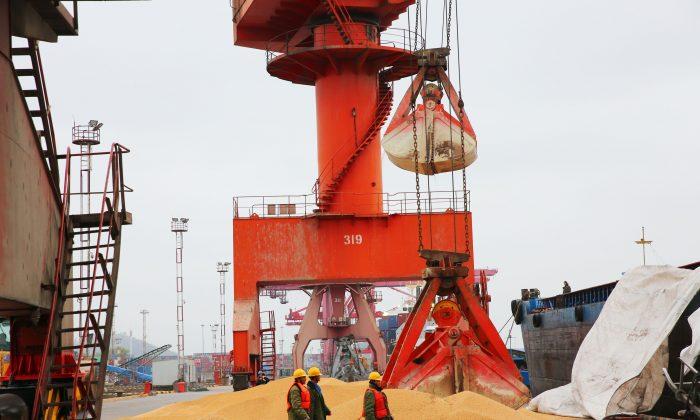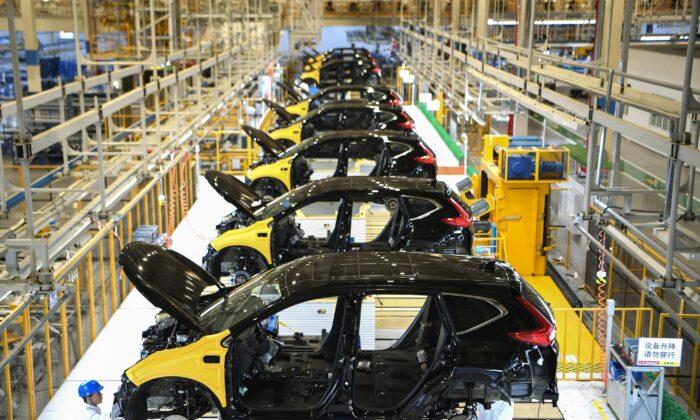Taiwan’s acquisition of over 60 Lockheed Block 70 F-16C/D Vipers fighter jets will delay the risk of a successful invasion by the Peoples’ Republic of China for up to a decade.
Taiwan’s Air Force on August 16 posted a Facebook infographic declaring the United States will sell Taiwan its fourth generation advanced F-16V fighters in “Minguo 108,” or 2019 under Taiwan’s calendar marking the 1912 founding of the Republic of China.
Reports quickly followed that the Trump administration had submitted the fighter sale to Congressional leaders that had already given bipartisan support. The Trump initiative comes after the People’s Republic of China declared the sale would cross a “red line.”
Despite China on a crash program to upgrade its 1,700 fighters fleet with Russian top of the line SU-35 fighters and deploying its world-competitive fifth-generation J-31 and J-20 stealth fighters, the Obama administration refused an $8 billion a request in 2010 to sell Taiwan 66 advanced F-16C/D fighters to replace its 60 antiquated French Mirage 2000 and indigenously 40 F-CK-1 fighter jets. The administration eventually did approve upgrading Taiwan’s aging 144 F-16A/B fighters that were already 18-years old.
“Taiwan has historically enjoyed military advantages in the context of a cross-Strait conflict, such as technological superiority and the inherent geographic advantages of island defense, but China’s multi-decade military modernization effort has eroded or negated many of these advantages.”
The report highlighted that China still claims authority under its 2005 “Anti-Secession Law” to use “non-peaceful means” if “major incidents entailing Taiwan’s secession” occur or the “possibilities for peaceful reunification” are exhausted.
Amphibious invasion across the 110 mile Taiwan Strait has been rated by military experts as extremely challenging. The island’s west coast would be heavily mined and difficult to transverse tidal mud flats abutting a highly defensible urban warfare zone. Taiwan’s east coast is unsuitably mountainous for amphibious landings.
To compensate, the report states Taiwan is modifying defense spending for “greater reliance on Taiwan’s Air Force and Navy” to defend against amphibious assault.
Ochmanek commented that big U.S. airbases on land and aircraft carriers on water are big targets for precision-guided long-range missiles. America’s monopoly on smart weapons is over as Russian and Chinese now build similar arsenals — along with long-range sensors, communications networks, and command systems required to aim them.
Taiwan’s big 767 Airborne Early Warning and Control (AWAC) planes are at high risk of getting shot down early during a China invasion. The 66 Block 70 F-16 Vipers and 144 upgraded F-16s are a game changer because they feature Northrop Grumman’s AN/APG-83 Scalable Agile Beam Radar. SABR is an active electronically scanned array type that allow each pilot to act as a theater AWAC to spot and track dozens of targets, including hard to accurately track low-flying stealth fighters and drones at longer ranges.
Block 70 F-16Vs also feature conformal fuel tanks that will substantially extend the aircraft’s “persistent air dominance” time during patrol and strike missions, despite the Block 70 carrying a much heavier weapons load including 3 AIM-120 Advanced Medium-Range Air-to-Air Missiles (AMRAAM) on each weapons pylon.
The strategic package of U.S. missiles, tanks and air dominance fighters being sent to Taiwan is a disruptive regional event that substantially increases the amount of time and scale of investment for China to present a highly credible amphibious invasion threat.





